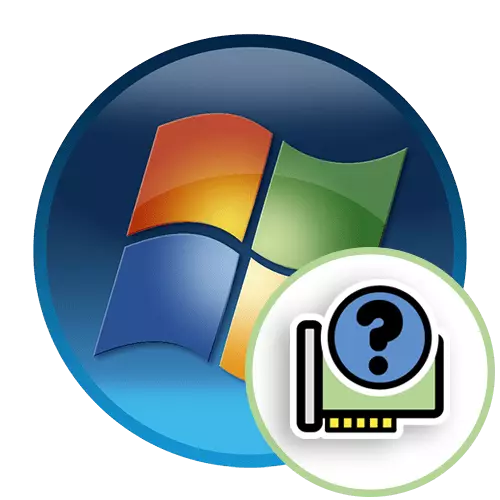
Method 1: Device Manager
In a known multiple device manager menus, without any problems, determine information about the main components and peripheral equipment in Windows 7. Additionally, the driver version and other useful information appears there.
- To go to the dispatcher, open the "Start" and select the control panel there.
- Lay the "Device Manager" list and click on this line with the left mouse button.
- On the screen you see a group of devices. Deploy the necessary of them to view the components.
- For example, in the screenshot below, the processor itself is displayed with a division into each accessible kernel. It also shows his maximum hertesman.
- Click on the PCM line of interest and select "Properties" in the context menu, if you want to view the view of other equipment information.
- The General tab displays the type of device, its manufacturer and placement.
- Next goes "Driver". Here you can learn its supplier, development date, version and digital signature. Other data are located in "Details", for example, a unique equipment identifier, which is required to determine in extremely rare cases.
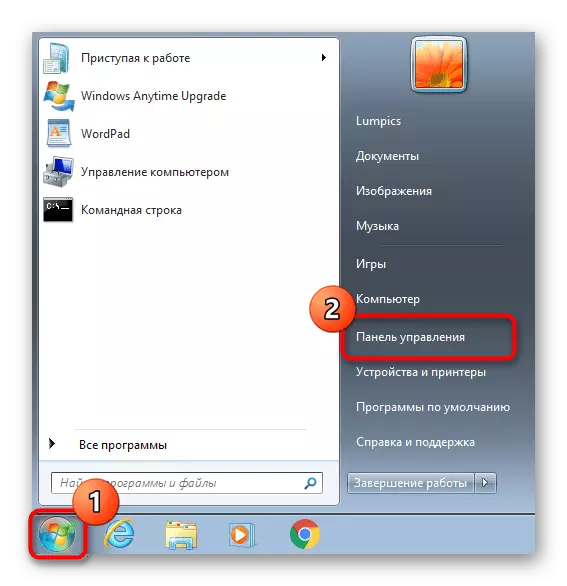


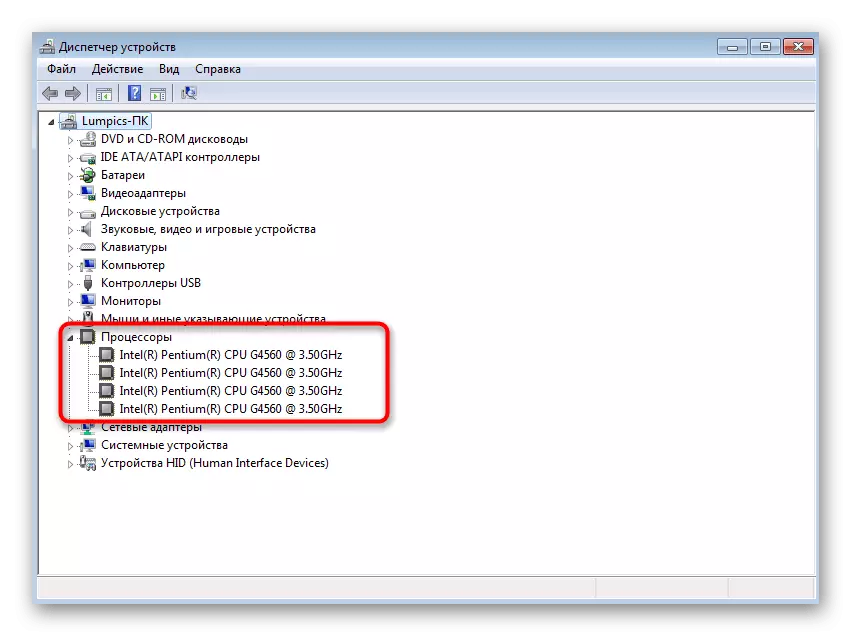
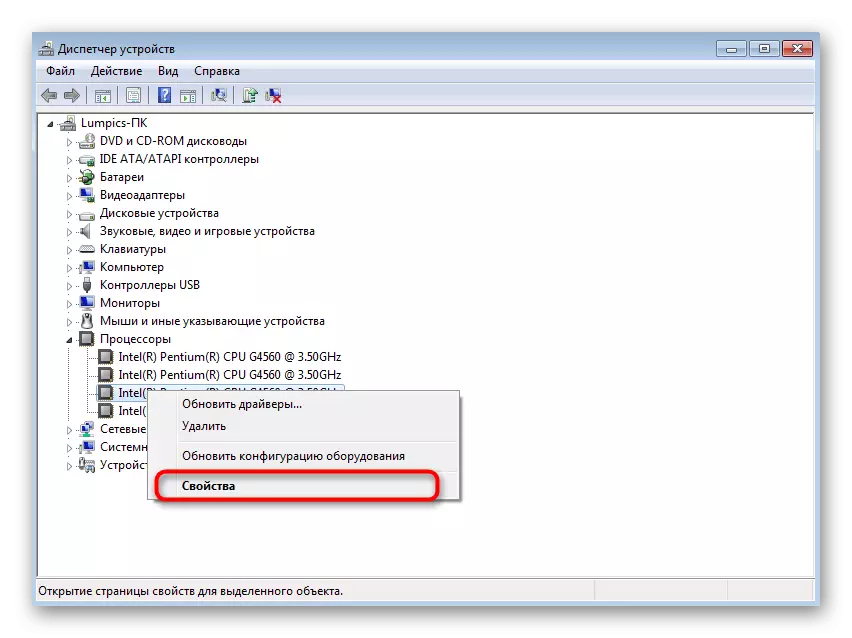
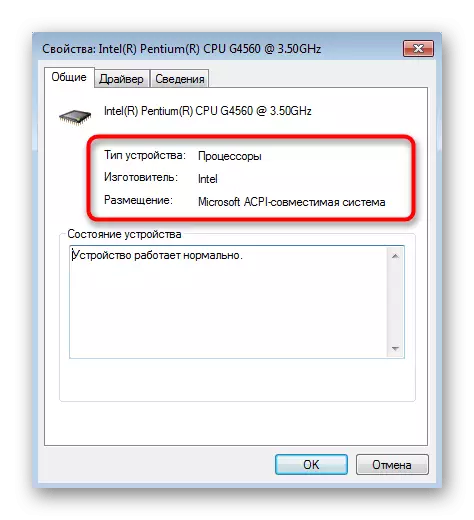
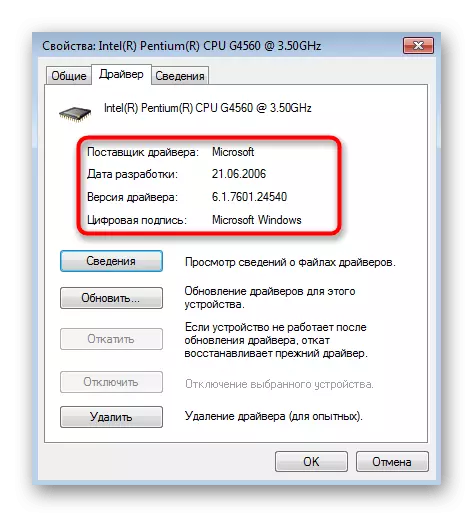
Method 2: Utility MSINFO32
Almost the same information in a slightly compressed form, but presented in a more convenient implementation can be found through the utility information about the system. It is installed in Windows by default, so no pre-action will have to produce.
- Open "Run" via the Win + R keys combination. Enter MSInfo32 in the field and confirm this command by clicking on ENTER.
- In the first section "System Information" is a little useful for you now. From here you can find out only the type of processor, the BIOS version and the available amount of physical memory. More useful data are located in the "Hardware Resources" and "Components" sections.
- Through "hardware resources" defines the device code. It is he who will be recorded in the event log if suddenly will occur some kind of failure associated with this equipment. Such a menu, divided into categories, will allow you to check the compliance of the devices to resources to be aware of the problems associated with the operation of the computer. The current state of the components is also shown here.
- If we are talking about a simple iron definition, then you should contact the "Components" section and choose a suitable category there. On the right side of the screen, all information about the element, such as a video card, will be displayed. You will receive not only its name, but also id, version of the driver, related files, the number of RAM and the ports used.
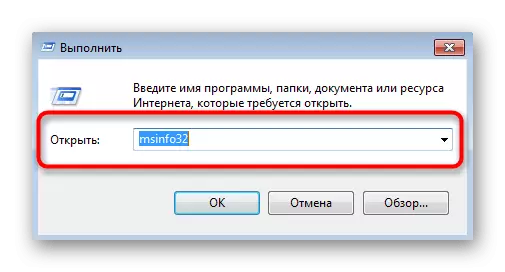
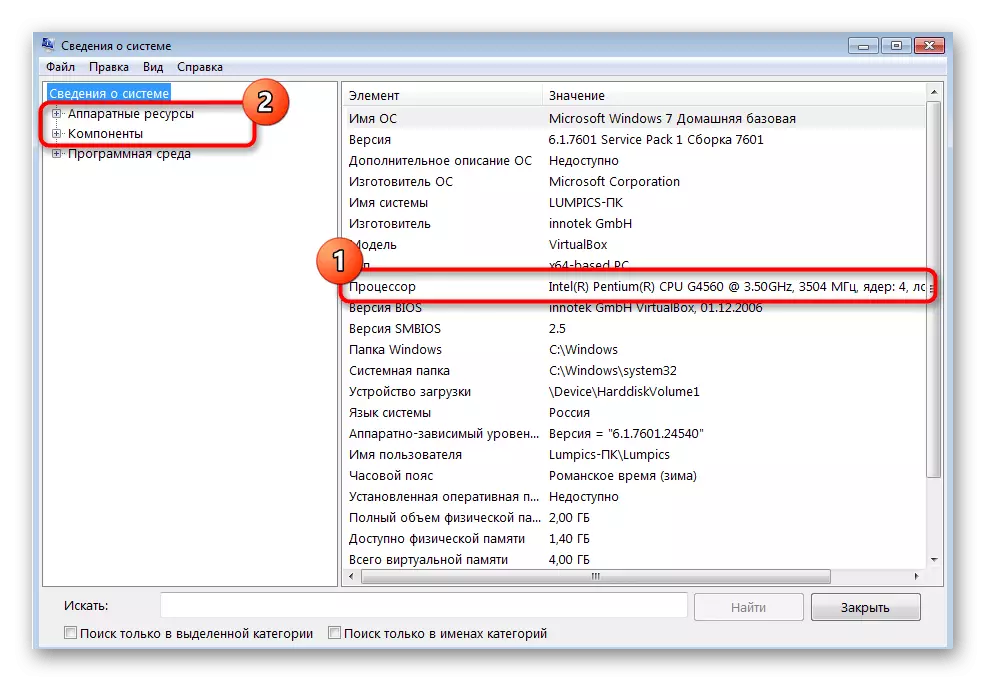
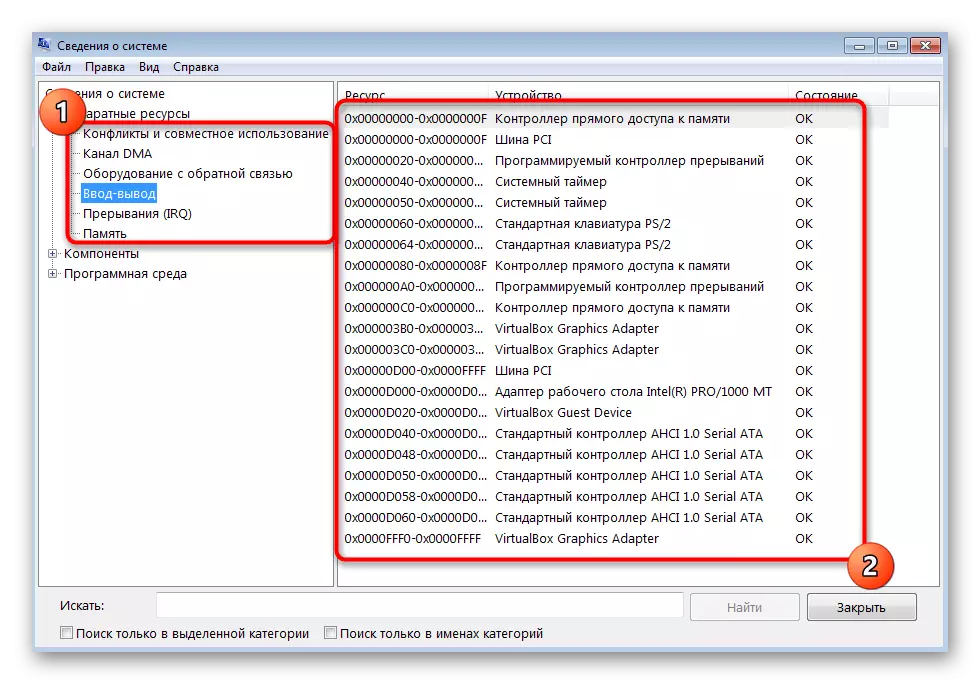
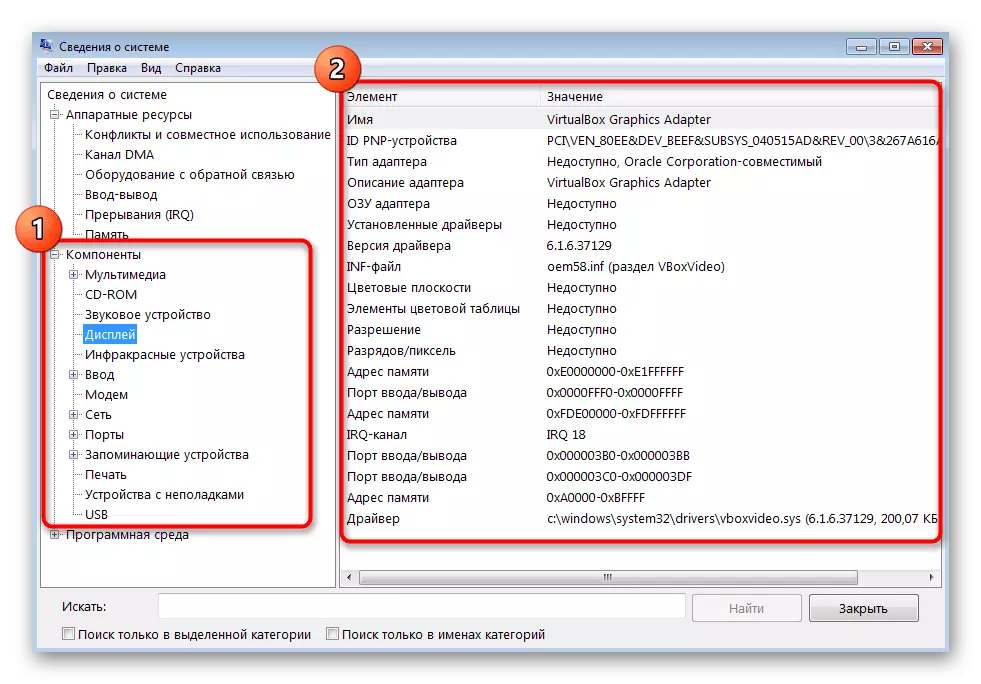
Method 3: DXDIAG utility
In short, consider the analogue described above - the utility called dxdiag. It is part of the DirectX complex and installed in Winds 7 by default. It is initially intended to verify the correctness of the functioning of the PC, but nothing prevents it from engaging it in order to see the list of the main components.
- Starting this tool also occurs through "Run" (Win + R), where in the field enter DXDIAG and press ENTER.
- The diagnostic tool is divided into four tabs where different thematic operation is displayed. On the first tab called "System" you will see data on the processor and the total number of RAM.
- Move the screen. Here is information about the graphics adapter, maximum resolution, its memory and the installed driver.
- On the Sound tab, you can define your audio card model, its unique identifier and find related drivers.
- In "Enter", you see connected peripheral equipment in the form of a mouse and keyboard. Below is a whole list with a list of installed drivers.
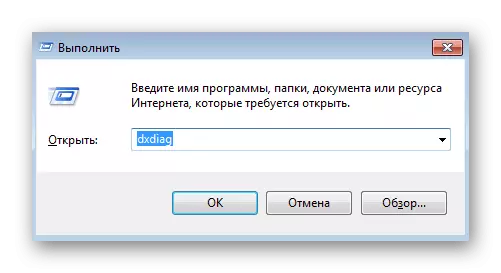
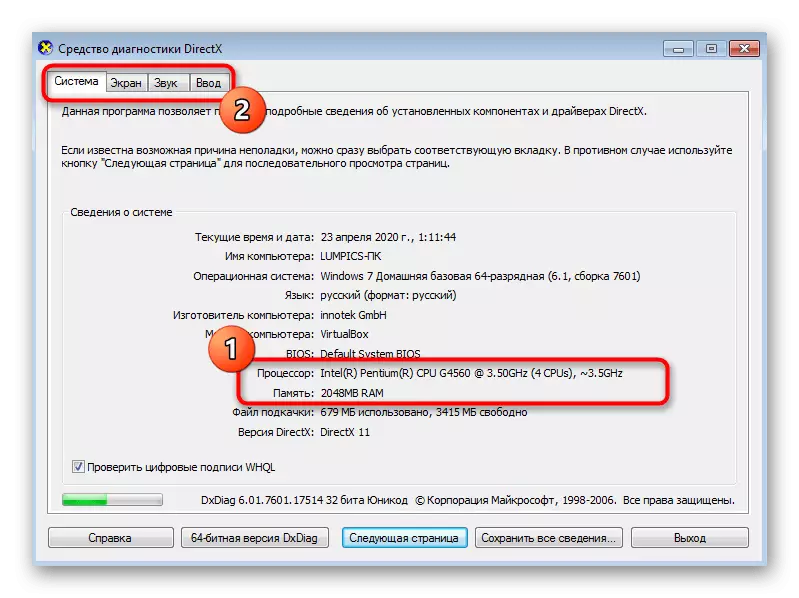
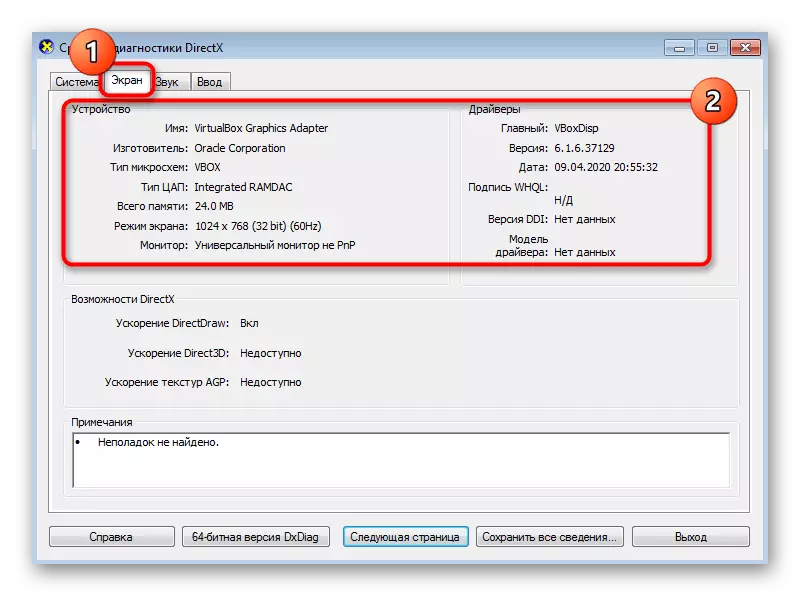
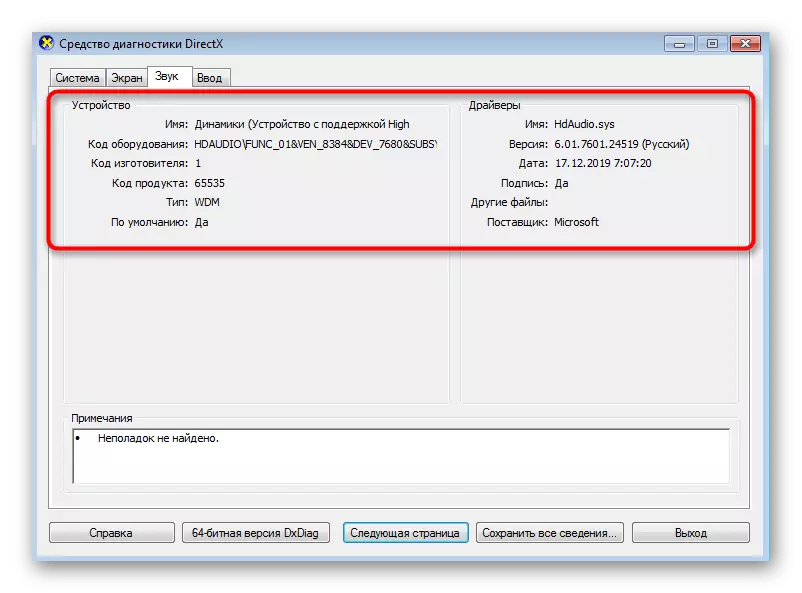
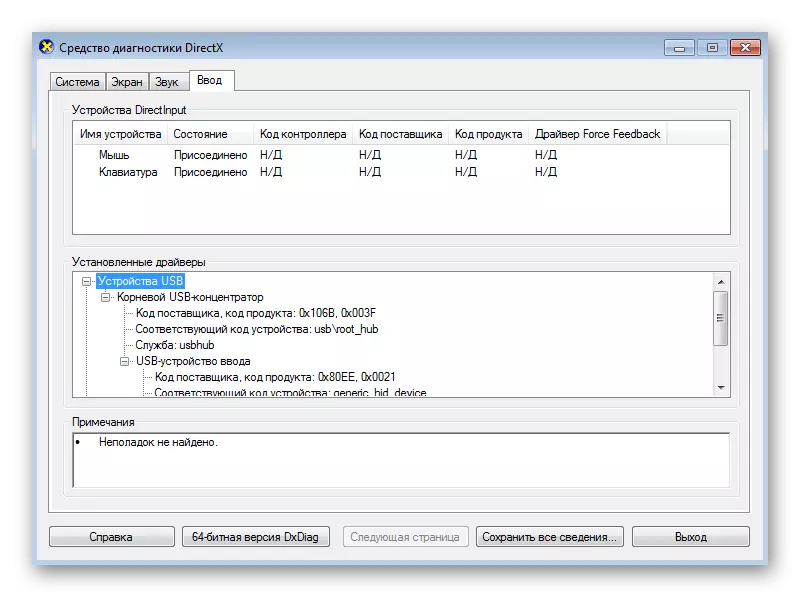
Method 4: third-party programs
In conclusion, we want to tell about third-party programs that allow you to quickly see all the basic information about each computer component. Such software is free and paid, and now for example, we will take a trial version of AIDA64. It will be enough to show the general principle of operation of such solutions.
- Use the link above to download AIDA64 from the official website and install on your PC. After starting, you will see the distribution in the category. Open one and them, pushing out the component of interest.
- All categories are divided into subcategories where thematic information is located. Move between them to view information. For example, in the Graphic Processor section, you will find the name of the video card used, the version of its BIOS, the type of bus and recognize the bandwidth.
- We clarify that information about the motherboard, processor, RAM, chipset and BIOS is collected in the "System Board" section and is also divided into categories.
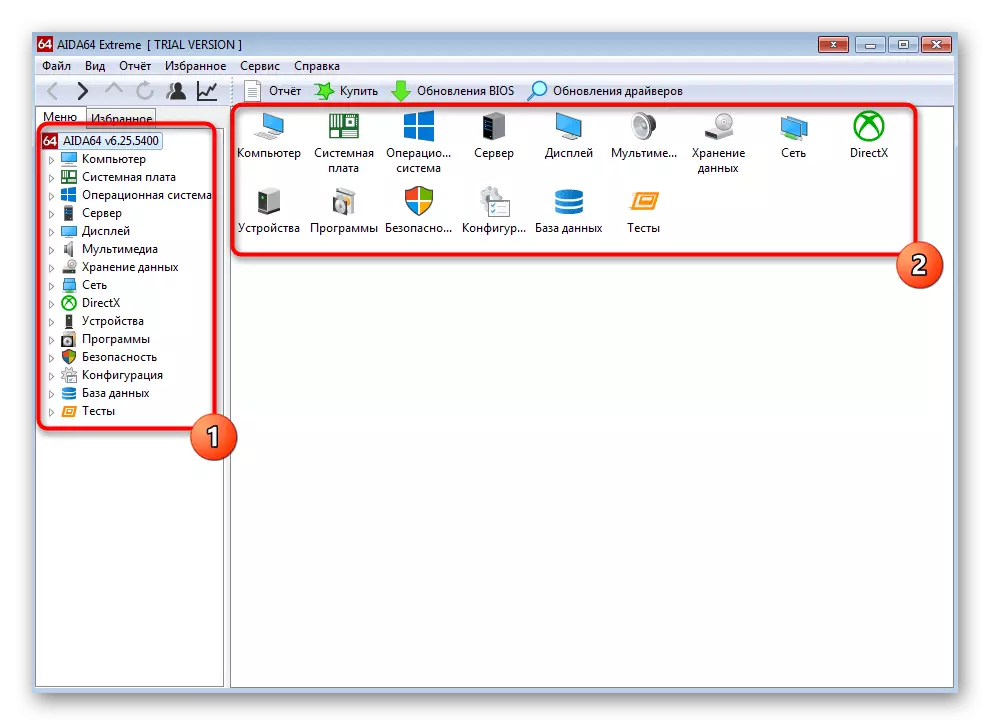
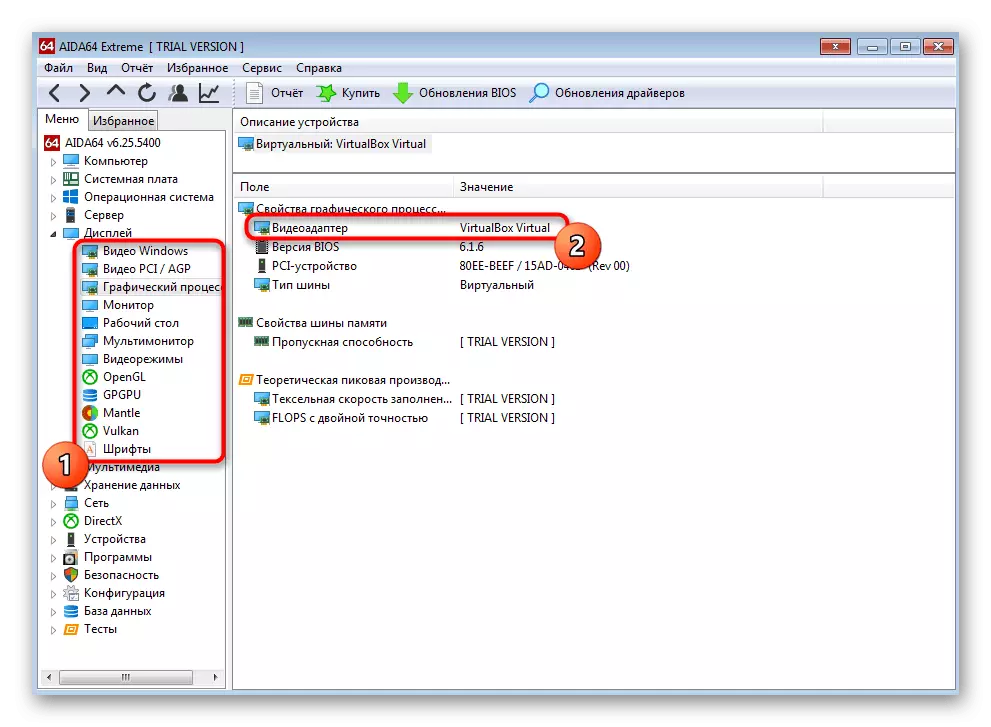

Most of these programs works the same, and the whole difference is only in the implementation of the appearance, so the above instruction can be considered universal. If Aida64 did not come to you, we recommend you to familiarize yourself with other popular representatives in a separate article on our website on the link below.
Read more: Programs for determining the iron of the computer
